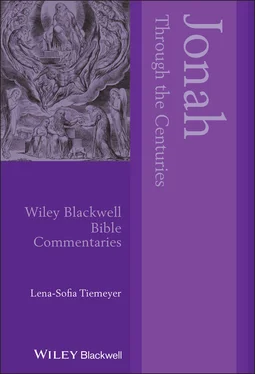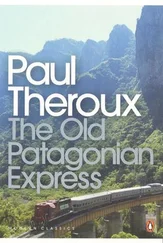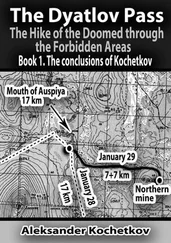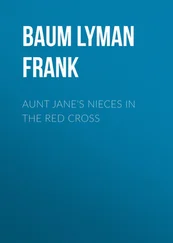Lena-Sofia Tiemeyer - Jonah Through the Centuries
Здесь есть возможность читать онлайн «Lena-Sofia Tiemeyer - Jonah Through the Centuries» — ознакомительный отрывок электронной книги совершенно бесплатно, а после прочтения отрывка купить полную версию. В некоторых случаях можно слушать аудио, скачать через торрент в формате fb2 и присутствует краткое содержание. Жанр: unrecognised, на английском языке. Описание произведения, (предисловие) а так же отзывы посетителей доступны на портале библиотеки ЛибКат.
- Название:Jonah Through the Centuries
- Автор:
- Жанр:
- Год:неизвестен
- ISBN:нет данных
- Рейтинг книги:4 / 5. Голосов: 1
-
Избранное:Добавить в избранное
- Отзывы:
-
Ваша оценка:
- 80
- 1
- 2
- 3
- 4
- 5
Jonah Through the Centuries: краткое содержание, описание и аннотация
Предлагаем к чтению аннотацию, описание, краткое содержание или предисловие (зависит от того, что написал сам автор книги «Jonah Through the Centuries»). Если вы не нашли необходимую информацию о книге — напишите в комментариях, мы постараемся отыскать её.
Jonah through the Centuries
should
Jonah through the Centuries
Jonah Through the Centuries — читать онлайн ознакомительный отрывок
Ниже представлен текст книги, разбитый по страницам. Система сохранения места последней прочитанной страницы, позволяет с удобством читать онлайн бесплатно книгу «Jonah Through the Centuries», без необходимости каждый раз заново искать на чём Вы остановились. Поставьте закладку, и сможете в любой момент перейти на страницу, на которой закончили чтение.
Интервал:
Закладка:
There are multiple other examples of Second-Temple-period Jewish interaction with the Book of Jonah. Jonah is mentioned in, for example, the Book of Tobit, Joseph and Aseneth , Testament of the Twelve Patriarchs , 3 Maccabees , and Hellenistic Synagogal Prayers .
A more substantial treatment is found in the Hellenistic sermon On Jonah , probably originating in the synagogue in Alexandria between 25 bce and 50 ce. One significant difference appears in its retelling of Jonah 1:15 where Jonah, according to the sermon, decides to commit suicide rather than allow the sailors to toss him overboard. Another variation concerns Jonah’s time inside the fish. According to the sermon, the fish cares for Jonah as a mother cares for the baby in her womb and takes Jonah on a sightseeing tour of the wonders of the ocean. This ‘detour’ becomes very influential and is later adopted and enhanced by other retellings of the Jonah narrative, exemplified by the Jewish midrash Pirke de-Rabbi Eliezer ( PRE ).
The Jewish historian Josephus offers an abbreviated version of Jonah in his Ant . 9.206–214, featuring only chs 1–2. He treats the biblical text as a historical record and downplays God’s active role in the narrative, together with all its miraculous aspects. In his hands, the Book of Jonah is turned into a narrative about Jonah’s disobedience and his later prayer to God. Nineveh and its (possible) repentance lose all significance, presumably because Josephus and his intended audience knew about its destruction in 612 bce by, among others, Neo-Babylonian and Median forces.
Among the Qumran scrolls, parts of the Book of Jonah are attested in five manuscripts (4Q76, 4Q81, 4Q82, Mur88, and 8Hev1). These manuscripts preserve three very minor variations, none of which alter the content of the book in any salient way.
1 4Q82 reads Jonah 2:7 [Eng. 2:6] ‘You brought up from the pit my life, My soul, o Yhwh my God’, in contrast to the MT of the same verse, which reads ‘You brought up from the pit my life, o Yhwh my God’.
2 4Q76 reads Jonah 3:2 ‘the proclamation like the one that I spoke’, whereas the MT reads ‘the proclamation that I am speaking’.
3 4Q82 and the MT of Jonah 4:6 use different appellations for God. Yet, although they use different names, both traditions would have been read and pronounced the same way.
Rabbinical and Mediaeval Jewish Interpretations
There are ample references to the Book of Jonah in various midrashic compendiums (e.g. Genesis Rabbah , Pesikta de-Rab Kahana ). One dominant trend in rabbinical interpretation is to flesh out the Jonah narrative with details of the prophet’s background. Traditional Jewish exegesis equates the prophet Jonah with the eponymous prophet in 2 Kgs 14:23–25, as well as with the anonymous prophet who was active during Jeroboam II’s reign in 2 Kgs 9:1. In parallel, Jonah is commonly identified as the son of the widow of Zarephath, who died and was resurrected by Elijah (1 Kgs 17).
These backstories are then read into the fabric of the Book of Jonah. The identification of Jonah with the prophet in 1 Kgs 14 provides Jonah with a reason for his flight. Jonah had previously had bad experiences with non-fulfilment of his prophecy, and he feared that the same would happen if he went to Nineveh, thus causing people to consider him to be a false prophet (e.g. Seder Olam Rabbah , PRE ). Another interpretation, also found among Christian interpreters, is that Jonah did not want to go to Nineveh because he was afraid that Nineveh’s repentance would reflect badly on Israel’s failure to repent (e.g. Mekhilta Attributed to R. Ishmael ). In contrast, the identification of Jonah with the resurrected son in Zarephath often serves to develop Jonah’s life after his journey to Nineveh. The Lives of the Prophets , for example, describes how Jonah and his mother chose to settle in Tyre following his return from Nineveh, the reason being that Jonah was now regarded as a false prophet in his homeland.
The mediaeval Jewish exegetes continue to debate many of the same questions (e.g. Rashi, Ibn Ezra, Radak) although they often advocate different solutions. Investigating the particular issue of Jonah’s flight from his mission, Abarbanel portrays Jonah as a martyr, who decided to disobey God to ensure Israel’s survival: if Nineveh was not given the chance to repent, then God would have to destroy the city, which in turn would mean that Assyria would not be able to annihilate the Northern Kingdom of Israel. Further, in contrast to The Lives of the Prophets , Abarbanel maintains that Jonah’s resurrection occurred in childhood and thus sheds light upon Jonah’s reference to God having (already) saved him from Sheol in Jonah 2:3 [Eng. 2:2].
Christian Interpretations
Turning to Christian readings of the Book of Jonah, they generally emphasized how Jonah, along with other characters in the book, foreshadows aspects of Jesus’s life and death. This type of exegesis often fostered strong anti-Jewish sentiments, which in turn led to Jewish polemical responses.
Typology
To appreciate fully the Christian uses of the Book of Jonah, we must begin in the New Testament (NT). The NT mentions Jonah in Matt 12:38–41; 16:1–4 and in Luke 11:29–32, two of which refer to the so-called ‘sign of Jonah’ (Matt 12:39; Luke 11:29). The NT authors aim (among other things) to show how Jesus is the fulfilment and culmination of the Hebrew Bible/Old Testament (OT). Read from this perspective, the texts in the OT have been either fulfilled or superseded. Fulfilment is understood to take place broadly in the person of Jesus in a collective, corporate, and individual way.
This approach was further developed in patristic exegesis. Much of the writings of the Church Fathers focussed on the relationship between the OT and the NT, emphasizing either the dichotomy between the two testaments (e.g. Marcion), their identity and essential sameness (e.g. the Alexandrian Fathers), or the continuity and development between the OT and the NT, where a sound reading of the OT begins in the NT and works backwards (e.g. the Antiochene Fathers). Both the Alexandrian and the Antiochene Fathers use typology: the correspondence between people and events of the past, present, and future. Typology is based on the conviction that God acts consistently and that earlier acts of God ‘prefigure’ his later acts (e.g. Matt 24:37; in John 3:14). To the Church Fathers, an OT character can be a ‘type’, i.e. a prophetic image that points forward to and is fulfilled by Jesus Christ, or an ‘anti-type’, i.e. a figure or situation that is opposite to that found in the NT.
Christian exegetes took an active interest in the Book of Jonah, partly due to its typological potential. Among the Church Fathers, the interpretations of St Cyril of Jerusalem, Gregory of Nazianzus, Jerome, John Chrysostom, and Augustine stand out. The reformers followed suit. Luther, Bugenhagen, and Calvin each wrote a full-length treatise on the book. Their exegesis was informed by its typological aspects, but they also interpreted the book in a relatively literal manner with an eye to its relevance to the theological debates of their time.
The widespread Christian typological understanding of Jonah has its origin in the reference to the ‘sign of the prophet Jonah’ in Matt 12:39/Luke 11:30. There are three main typological events in Jonah’s life:
1 Jonah being tossed into the sea by the sailors is a precursor for Jesus’scrucifixion (Jonah 1:15).
2 Jonah’s three days inside the belly of the fish is a precursor for Jesus’sdeath (Jonah 2:1b).
3 Jonah being vomited out of by the fish is a precursor for Jesus’s resurrection (Jonah 2:10).
Читать дальшеИнтервал:
Закладка:
Похожие книги на «Jonah Through the Centuries»
Представляем Вашему вниманию похожие книги на «Jonah Through the Centuries» списком для выбора. Мы отобрали схожую по названию и смыслу литературу в надежде предоставить читателям больше вариантов отыскать новые, интересные, ещё непрочитанные произведения.
Обсуждение, отзывы о книге «Jonah Through the Centuries» и просто собственные мнения читателей. Оставьте ваши комментарии, напишите, что Вы думаете о произведении, его смысле или главных героях. Укажите что конкретно понравилось, а что нет, и почему Вы так считаете.












